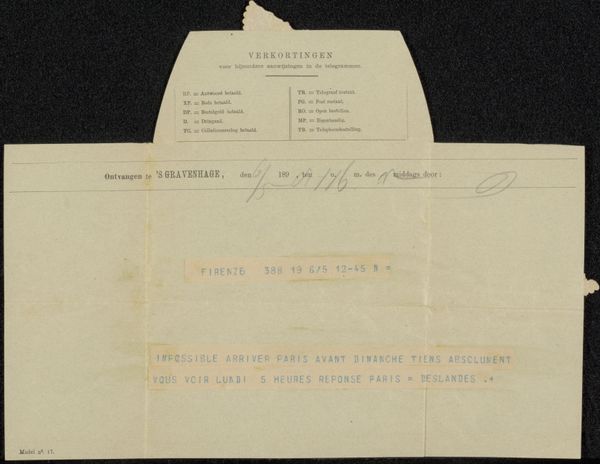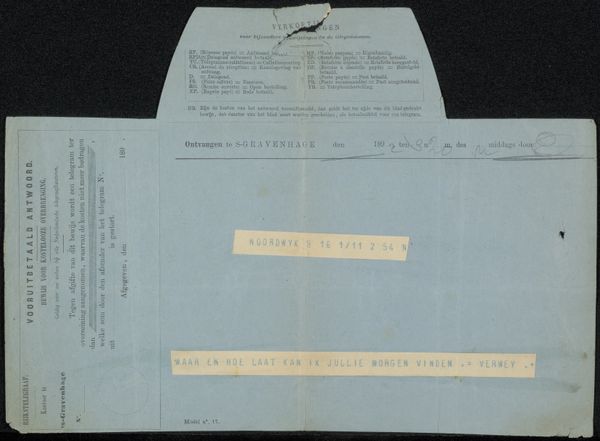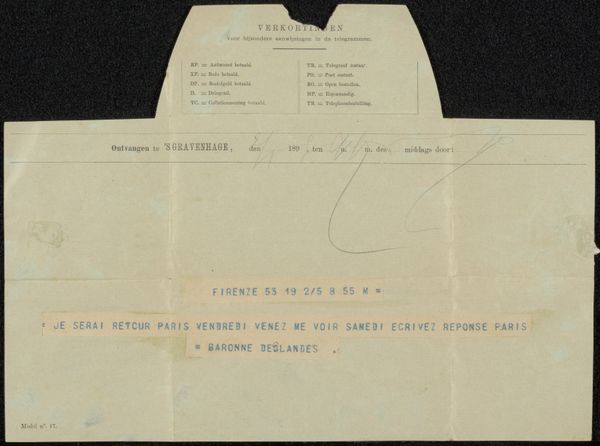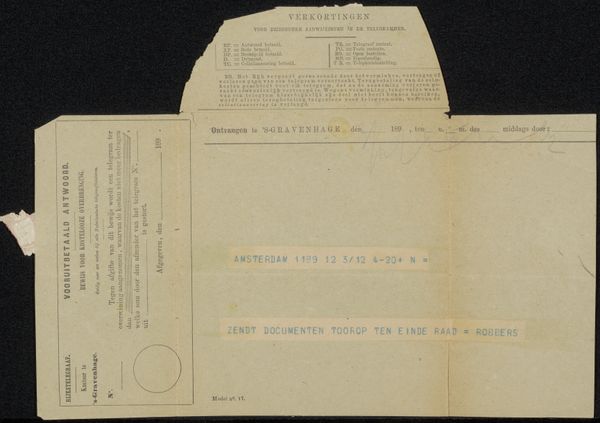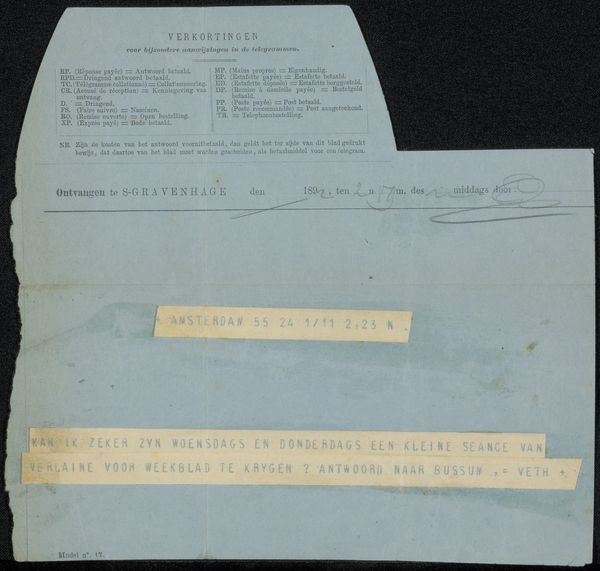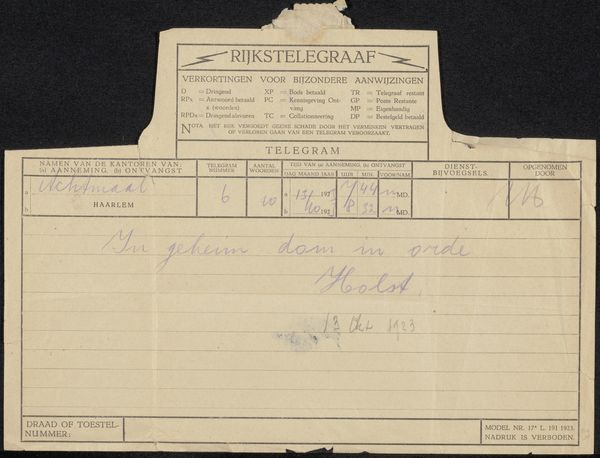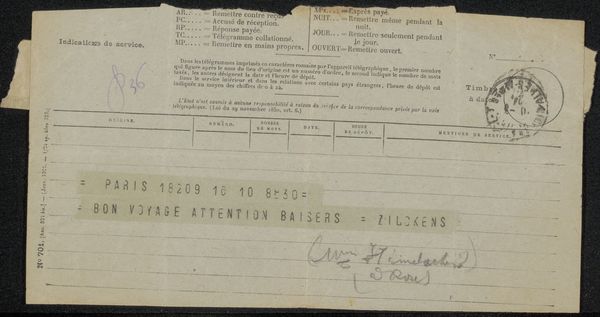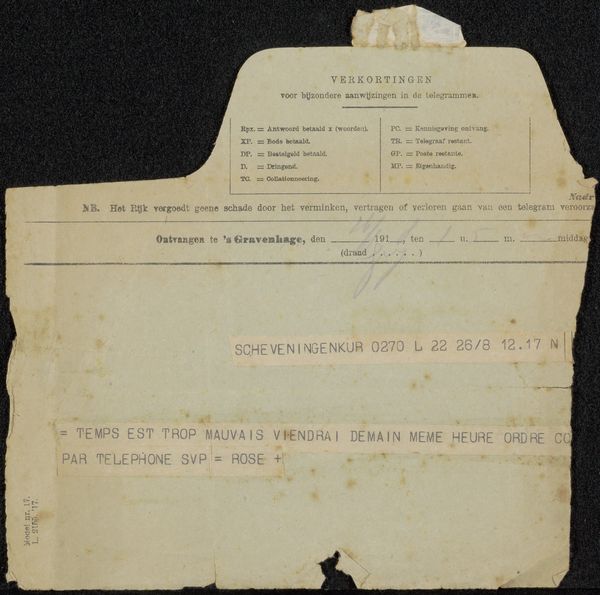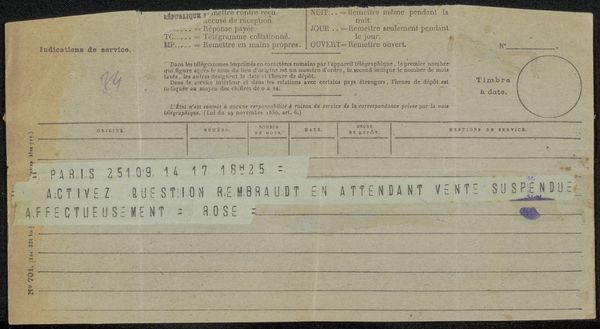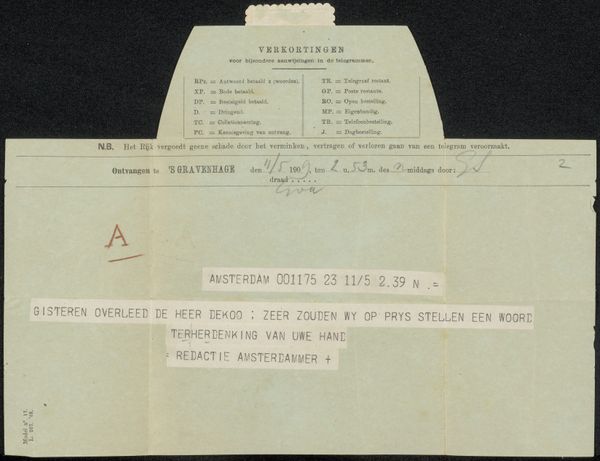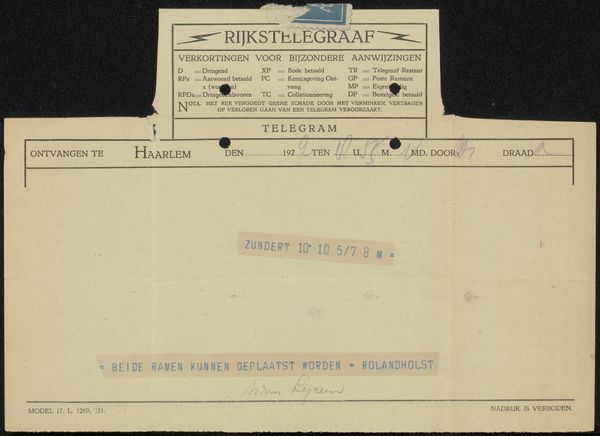
Copyright: Rijks Museum: Open Domain
Editor: This is "Telegram aan Pieter Haverkorn van Rijsewijk" by George Hendrik Breitner, likely from 1906. It's a mixed-media piece, including drawing, collage, print, textile, and paper. It’s just…a telegram. It seems so ordinary, and yet it's framed and hung in a museum. What's so special about it? Curator: The magic lies precisely in its ordinariness, and its transformation into a valued object. Breitner, known for capturing the gritty reality of Amsterdam, sends this telegram refusing to sell a painting for less than 1500 guilders. We have to consider the rise of the art market and how artists positioned themselves within it. Breitner's assertion of value isn't just about money; it's about artistic self-worth in a rapidly changing cultural landscape. What do you think the inclusion of commonplace material like a telegram says about his intentions for it as an artistic document? Editor: I guess it makes him seem more like a working artist and less like some romantic genius in an ivory tower. But wouldn't he rather his art be accessible? It is strange that he is restricting who can afford the painting with his price floor, and yet choosing to keep the message as commonplace as a simple telegram. Curator: Exactly. There's a tension there, isn't there? Consider the institutional power at play. Museums historically validated certain artists and styles. By elevating something so ostensibly mundane, Breitner is perhaps commenting on the arbitrary nature of artistic value as determined by the art world, and perhaps poking fun at the wealthy folks that consume it. Editor: So, the art isn’t necessarily *in* the telegram itself, but in the statement it makes about the art world? Curator: Precisely. It highlights the socio-economic context in which art is created and consumed. I appreciate that you recognize the tensions between democratizing art through real-life portrayals versus creating an artificially high-priced floor that can block average citizens from being able to enjoy it, despite those portraits. Editor: This has given me a whole new appreciation for seemingly "simple" artworks. The telegram becomes a symbol of the artist’s struggle for recognition. Curator: Absolutely. It prompts us to question what we value and *why*, which hopefully encourages more people to visit museums!
Comments
No comments
Be the first to comment and join the conversation on the ultimate creative platform.
